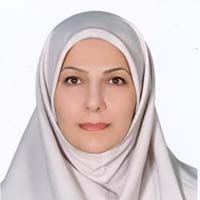Pigment Productions by Spirulina platensis as a Renewable Resource
Author(s):
Article Type:
Research/Original Article (دارای رتبه معتبر)
Abstract:
Introduction
Recently, Spirulina platensis has scientifically become popular because of its importance as food, feed, and a natural producer of pigments with specific nutritional and functional characteristics.Materials and Methods
In this study, the effect of various environmental factors affecting growth conditions of Spirulina platensis, including primary inoculation, light-dark cycle, cultivation time, Light-Emitting Diode (LED) composition, nitrogen source, carbon source, and NaCl concentration, on biomass, C-phycocyanin (C-PC), Allophycocyanin (APC) and chlorophyll-a contents were assessed using Placket-Burman Design (PBD).Results
Results showed that out of the seven screened factors, four factors of carbon source, LED composition, light-dark cycle and NaCl concentration significantly affected biomass production (p<0.01). Among the investigated factors, nitrogen source, light-dark cycle, and NaCl concentration had significant effects on phycocyanin production (p<0.05). Results showed that cultivation time, light-dark cycle, and NaCl concentration significantly affected the production of allophycocyanin (p<0.05). Furthermore, NaCl concentration, carbon source, LED composition, cultivation time, and initial inoculation included significant effects on chlorophyll-a production (p<0.05).Conclusions
The present study screened variables affecting biomass, phycocyanin, allophycocyanin, and chlorophyll-a production as the first step in optimizing Spirulina platensis growth condition. Briefly, NaCl concentration was one of the factors which had a significant impact on all responses. The dark cycle also had an effect on three dependent variables except for chlorophyll-a production.Keywords:
Language:
English
Published:
Journal of Applied Biotechnology Reports, Volume:9 Issue: 2, Spring 2022
Pages:
614 to 621
https://magiran.com/p2449120
سامانه نویسندگان
مقالات دیگری از این نویسنده (گان)
-
Investigating the Effect of Suborbital Launch Conditions of the Biological Capsule on Probiotic Microorganisms
Maryam Salavatifar, Kianoush Khosravi-Darani *
Journal Of Isfahan Medical School, -
Development of a High-Yield Process for Scalable Extraction of Beta-Glucan from Baker's Yeast
Anis Khoshyaran, Valiollah Babaeipour, Ali Asghar Deldar, Masoumeh Mirzaei, Kianoosh Khosravi Darani *
Iranian Journal of Chemistry and Chemical Engineering, Sep 2024



